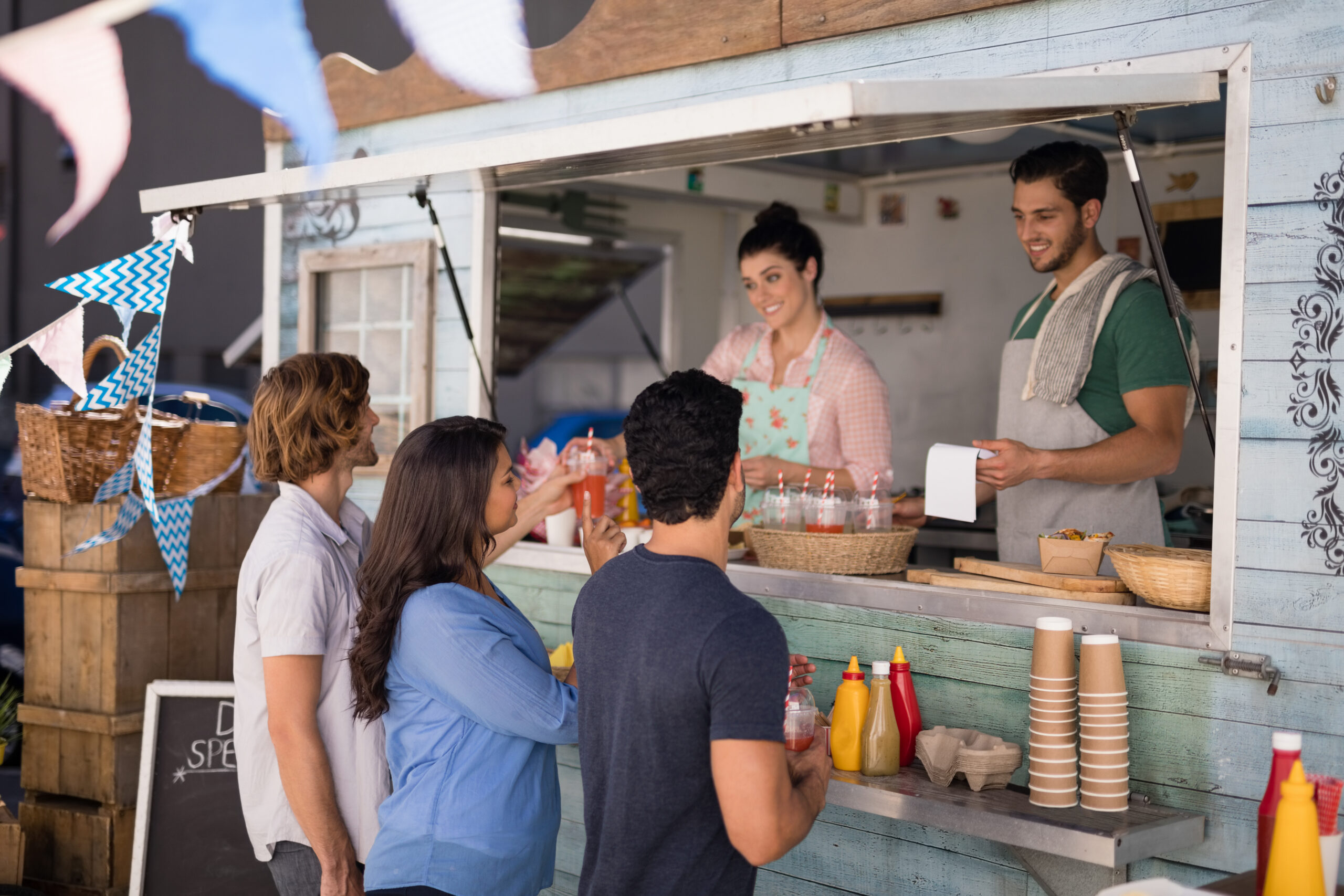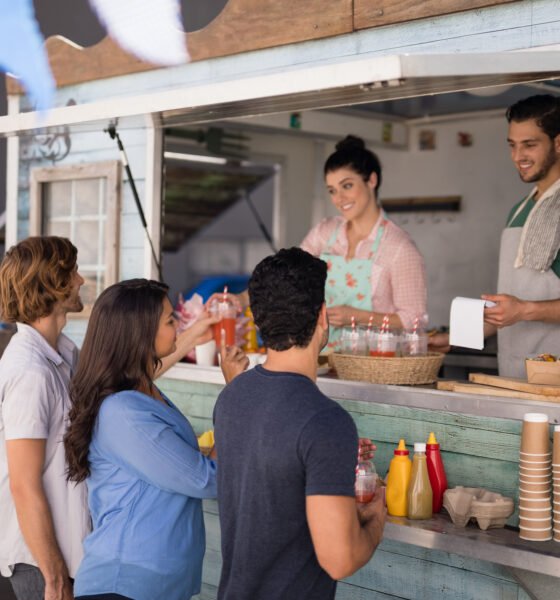

Charity
9 Essential Elements of Success for Eco-Friendly Food Trucks
This summer, we talked about some ways that different food-based companies are becoming more sustainable. We mentioned farmers that were taking more sustainability initiatives. However, other food companies, such as food trucks, are also becoming eco-friendly.
For food lovers and aspiring chefs alike, there’s nothing more exciting than discovering new flavors, especially from up-and-coming culinary geniuses. And what better way to reach a wide market than take the show on the road? The food truck business is booming because the mix of food and entertainment create the perfect rustic, outdoor festival environment — whether in weekend fairs, or even just on the curb, at the heels of a busy intersection. It should be no surprise that the industry is worth an estimated $1.2 billion.
But beneath the rustic charm of food trucks is a real logistical and sustainability problem. For one, trucks are constantly on the road, and produce toxic fuel emissions. And while customers often don’t mind the lack of seating or the absence of a real restaurant experience, takeout- or picnic-style eating means food truck owners rely on hordes of disposable, single-use plastic containers and cutlery that crowd landfills.
It is Possible to Run a Sustainable Food Truck Business
The good news is, food trucks can be smarter — and greener — with their packaging, starting with eco-friendly products. We pride ourselves on sharing ideas for sustainable businesses. Earn the trust of environmentally-conscious customers, and improve the sustainability of your budding restaurant business. Here’s how customers can enjoy the same flavors they know and love, but cooked sustainably and economically:
Love Local: Source Food and Ingredients Locally
There’s nothing that says “fresh” more than farm-to-table goodness — and it’s not limited to premiere restaurants with fancy and pricey menu items! Even food truck owners can source ingredients locally and build a sustainable supply chain with their community.
Customers love it when they know where their food is from: that tells them it’s safe to eat and packs fresh, quality taste because they know how these are grown and sourced. Local and ethical sourcing also helps reduce your carbon footprint, since it reduces transportation costs for restocking your inventory.
Choose Green Vendors
The discounts on wholesale merchandise can be tempting, but their production is often not organic, unlike in local farms. Traditional agricultural practices produce healthy, organic ingredients. By working with local farmers that abide by green, eco-friendly farming techniques, you can guarantee ethical production and consumption — and utmost safety in every chemical pesticide-free bite.
Reduce Energy Consumption
Harvard Business Review points out that every sustainable business needs an energy strategy. This applies to food trucks as well.
Just because everything is prepared to-go doesn’t mean food trucks don’t consume a lot of energy. While it’s nowhere near as restaurants, food truck owners can still look towards constantly reducing energy consumption to save on utility costs and reduce their carbon footprint, especially since this entire business model is built on transportation between locations.
To reduce your truck’s energy consumption, start by examining the kinds of commercial appliances and kitchen equipment you regularly use, and how much energy they require. Smart appliances can help you go green quickly, as well as foot-operated equipment like a portable sink for low-cost, almost zero-energy, but effective hand washing.
Reduce Food and Other Waste
The food industry is no stranger to waste, whether it’s in unused or expired ingredients, spoiled food, leftovers, and non-recyclable packaging. These waste items pile up and negatively impact the environment. Where possible, cut down on waste by encouraging customers to bring reusable containers or switch to biodegradable packaging and cutlery.
Use Alternative Fuels
If there’s one thing that food trucks rely on more than anything, it’s gas. Because food trucks are mobile and are no strangers to serving customers even on the open road, they tend to consume a lot of fuel that produces toxic emissions.
To run a green food truck while ensuring safe and fast travel to different locations with lots of potential customers, consider switching to eco-friendly biodiesel made from vegetable oil, animal fat, and other recycled greases, or use the converter kit. As well, explore alternative power sources like solar panels and electric power.
Clean Green
Commercial cleaning products are often made of chemicals that harm both you and the environment. Instead, switch to green, non-toxic cleaners for utmost safety and zero hazard.
As well, opt for green appliances like a portable hand washing sink. Not only does it promote food safety, but it does so by reducing water and energy consumption since a portable sink can be foot-operated or battery-powered and run only when in use. Portable hand washing sinks come in a range of sizes and basin configurations so that you can maintain a clean and safe food truck despite the limited space.
Use Eco-Friendly Equipment
Even the little things like bags, straws, containers, and cutlery make a difference, so opt out of the plastic variety and serve customers with biodegradable supplies. Also, run your food truck with energy star rated appliances like under-counter refrigerators and griddles to use less electricity and save on energy costs and maximize the limited kitchen and storage space.
#InstaFood: Tap the Power of Social Media
Gone are the days of flyers and posters — most customers throw them out anyway without reading them. But this shouldn’t cause you to fall behind on marketing and sales.
Instead, ramp up your food truck’s social media pages: post photos online, and ask customers to tag you in their posts, too. Most customers look to social media these days to find the next attraction or treat, so create opportunities to make your food trend through hashtags, searches, and a growing follower base.
Design an Eco-Friendly Menu
Along with organic, locally sourced produce, opt for sustainable meat taken from grass-fed animals and cooked with organic ingredients. Greener menu options aren’t limited to vegetarian or vegan cuisines — even with meat dishes; there are ways to ensure sustainable and ethical consumption while preserving signature taste.
When presenting these menu items to customers, go paperless. Because food trucks are typically takeout-only, there’s no point in providing customers with individual menus. And because most food trucks are specialty-based, it’s more efficient to display the menu on a board or leverage QR codes that customers can scan on their phones.
You Can Run a Greener Food Truck!
With signature flavours and a large customer base, it won’t be long before your food truck becomes a curbside or outdoor festival staple; it also won’t take a lot to run a greener, eco-friendly business. These simple tips can make your food truck sustainable while ensuring maximum traffic. Take your truck on-the-go, and bring healthy, delicious food to customers everywhere.


 Environment10 months ago
Environment10 months agoAre Polymer Banknotes: an Eco-Friendly Trend or a Groundswell?

 Environment11 months ago
Environment11 months agoEco-Friendly Home Improvements: Top 7 Upgrades for 2025

 Features9 months ago
Features9 months agoEco-Friendly Cryptocurrencies: Sustainable Investment Choices

 Features10 months ago
Features10 months agoEco-Friendly Crypto Traders Must Find the Right Exchange





























